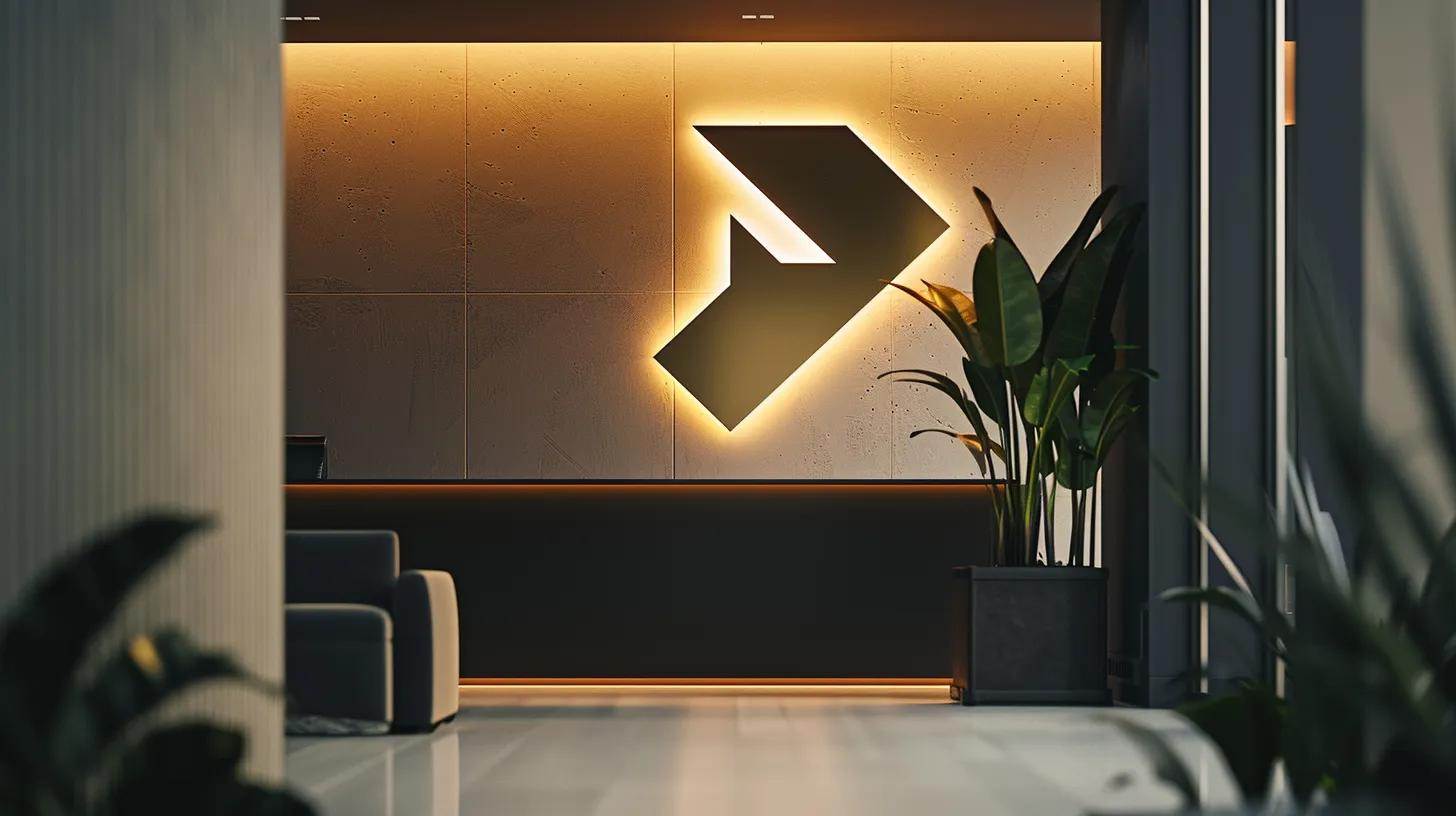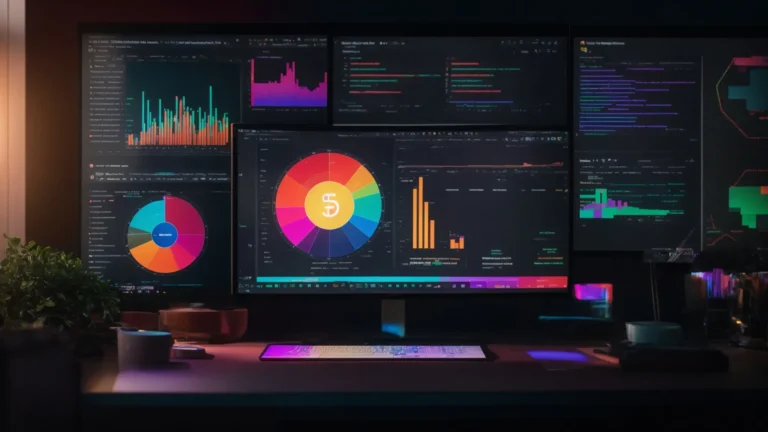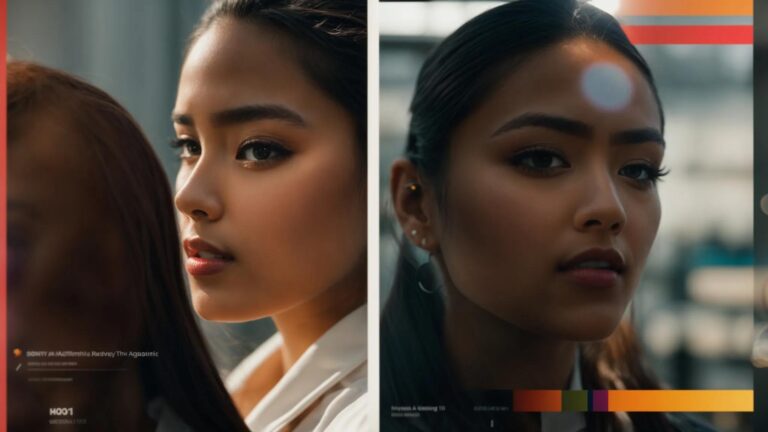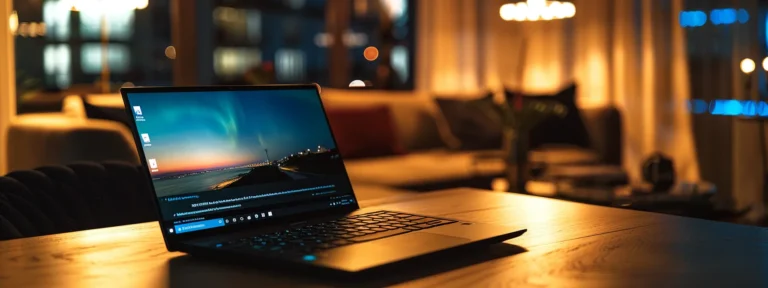Heads Up: When you purchase through links on our site, we may earn an affiliate commission at no cost to you.
A strong brand identity begins with a memorable logo. In the competitive world of real estate, your logo is often the first impression potential clients will have of your business. This article will explore essential elements like current design trends, sources of inspiration, and common pitfalls to avoid when creating a logo that reflects your property brand. By understanding these aspects, you’ll be better equipped to develop a unique wordmark or monogram that stands out, ensuring your business card leaves a lasting impact. Engage with this content to elevate your brand and attract more clients.
Key Takeaways
- A unique logo enhances brand recognition and influences client perceptions in real estate.
- Colors evoke emotions, while typography establishes professionalism and brand consistency.
- Minimalism in logo design promotes clarity and ensures versatility across marketing platforms.
- Avoid clichés to maintain uniqueness and improve brand distinction in a competitive market.
- Understanding your audience’s preferences is crucial for creating an impactful real estate logo.
Understanding the Importance of a Unique Logo in Real Estate Branding

A unique logo is vital for real estate branding as it encapsulates key elements that define your identity. You’ll learn how a well-crafted logo affects brand perception, the significance of colors and typefaces in graphic design, and how your logo can drive marketing success as a real estate agent. Each aspect plays a pivotal role in inspiring your brand identity.
Define the Key Elements of a Real Estate Logo
When designing a real estate logo, consider key elements such as color, typography, and style. Each component serves a purpose; for example, colors can evoke specific emotions and associations related to construction or mortgage services. A minimalistic approach often works best, allowing your logo to remain versatile and recognizable across various marketing platforms.
Typography is another crucial element that enhances your brand’s identity. Choosing the right font creates a professional image that appeals to prospective clients. You reinforce your brand’s message and values by harmonizing typography with your logo’s design and ensuring consistency across all content marketing efforts. To summarize the importance of these elements:
- Color influences emotional perception.
- Minimalism ensures versatility and clarity.
- Typography adds professionalism and coherence.
Explain How a Logo Influences Brand Perception
Your logo visually represents your real estate business, directly influencing how clients perceive your brand. A well-designed logo communicates professionalism and reliability, which are essential for attracting clients in a competitive market. For example, a serif font can evoke a sense of tradition and trustworthiness, aligning perfectly with the values you want your potential clients to associate with your services.
Moreover, a unique logo can enhance brand recall, making it easier for clients to remember your business. When potential clients see a memorable logo consistently across various platforms, it reinforces your brand’s identity and message. Thus, investing time in crafting a logo that resonates well with your audience can significantly impact your real estate marketing success:
| Logo Element | Impact on Brand Perception |
|---|---|
| Color | Evokes emotions and associations with your values |
| Typography | Creates a professional image |
| Style | Ensures versatility across marketing platforms |
Discuss the Role of Colors and Typography in Logos
Colors are critical to your real estate logo and influence potential clients’ feelings about your brand. For instance, blue conveys trust and dependability, while green signifies growth and stability. Selecting the right color palette reflects your brand’s values and attracts the right clientele, making a thoughtful approach essential in logo design.
Typography complements your logo’s overall design while communicating your brand‘s personality. A bold sans-serif font can suggest modernity and confidence, whereas an elegant serif typeface can evoke a sense of tradition and reliability. By harmonizing colors and typography, you create a cohesive visual identity that resonates with your audience, making your brand more memorable and effective in marketing efforts.
Illustrate the Impact of Logo Design on Marketing Efforts
Your logo design significantly impacts your marketing efforts by enhancing brand recognition and creating a lasting impression on potential clients. A unique logo consistently used across various marketing materials—business cards, websites, and social media—helps establish a strong visual identity. This consistency enables clients to remember your brand easily and differentiates you from competitors in the real estate market.
- Instant feedback
- Valuable insights
- Actionable tips
Exploring Current Trends in Real Estate Logo Design

Identifying popular styles in real estate branding is essential for creating a compelling logo. You’ll examine the influence of minimalism on logo design, analyze the use of abstract designs, and highlight the importance of digital-friendly logos. Each topic offers insight into current trends that can help you enhance your brand identity and appeal to clients effectively.
Identify Popular Styles in Real Estate Branding
One prominent trend in real estate branding is minimalism, which focuses on simplicity and clarity. This style helps your logo stand out using clean lines and a limited color palette, making it easily recognizable across various platforms. Adopting a minimalist approach can create a lasting impression on potential clients and convey professionalism, aligning with their expectations of trust in the real estate industry.
Another popular style involves abstract designs, which provide a modern twist to traditional real estate logos. This approach allows you to express your brand’s uniqueness while appealing to a broad audience. Abstract elements can also differentiate your business from competitors, making your logo more memorable and effective in attracting the right clientele.
Examine the Influence of Minimalism on Logos
Minimalism significantly shapes modern real estate logos by promoting clarity and recognition. This approach eliminates unnecessary elements, creating a simple yet powerful design that resonates with clients. By embracing minimalism, you ensure your logo remains versatile across different platforms while effectively communicating your brand‘s professionalism.
Having minimalistic design principles enhances client perception and establishes a strong visual identity. For instance, a logo characterized by clean lines and a limited color palette can create a distinct impression, making your brand memorable in a competitive market. Consider incorporating these elements into your logo design to connect better with potential clients and address their desire for straightforward and trustworthy services:
- Emphasize simplicity for clarity.
- Utilize a limited color palette for consistency.
- Ensure easy recognition across various platforms.
Analyze the Use of Abstract Designs in Real Estate
Abstract designs in real estate logos allow you to convey your unique brand message while appealing to a wide range of potential clients. By utilizing geometric shapes or unconventional layouts, you can create an engaging visual identity that distinguishes your business from others in the industry. This approach captures attention and invites viewers to connect with your brand on a more emotional level, as abstract elements can evoke curiosity and interest in your services.
When you incorporate abstract designs, you can effectively highlight your brand‘s innovative nature and adaptability. For example, a logo with dynamic, flowing lines can symbolize growth and progress, making it attractive to modern clients looking for forward-thinking real estate solutions. By aligning your logo design with modern sensibilities, you enhance your market presence, ultimately drawing in prospective clients who value creativity and fresh approaches in real estate branding.
Highlight the Importance of Digital-Friendly Logos
Creating a digital-friendly logo is essential in today’s technology-driven market, especially for real estate branding. Your logo should be easily viewable and recognizable on various online platforms, including websites and social media profiles. A well-designed logo that scales properly on mobile devices ensures you make a strong impression on potential clients, regardless of where they encounter your brand.
Furthermore, a digital-friendly logo enhances your marketing efforts by ensuring consistency across all digital touchpoints. Adopting a design that works well in color and monochrome allows you to maintain brand integrity across different media. This thoughtfulness in design builds trust with your audience. It makes it easier for you to stand out in a competitive real estate landscape, ultimately assisting you in attracting more leads.
Sources of Inspiration for Real Estate Logo Designs

Reviewing successful real estate brand logos can provide valuable insights into effective design strategies. You’ll explore emerging design concepts found in other industries that can inspire your unique logo. Additionally, we’ll compile useful resources for logo design inspiration and showcase specific platforms tailored for real estate branding. Each topic will guide you toward creating a compelling visual identity.
Review Successful Real Estate Brand Logos
Successful real estate brand logos can offer valuable insights into effective design strategies. For instance, companies like Keller Williams utilize a bold red color combined with clean typography, which conveys energy and professionalism. By analyzing these elements, you can identify what resonates with your audience and adapt your logo to reflect similar qualities.
Consider how brands like RE/MAX leverage iconic imagery, like hot air balloons, to create a memorable visual identity. Such distinctive elements enhance brand recall and forge an emotional connection with clients. By incorporating unique aspects like these into your logo design, you can differentiate your brand in the competitive real estate market while appealing to your target clientele.
Outline Emerging Design Concepts in Other Industries
As you explore logo design concepts from other industries, you’ll notice fascinating trends influencing branding strategies. For example, the tech industry often embraces geometric shapes and clean lines to convey innovation and efficiency. Applying similar principles to your real estate logo can help establish a modern look that appeals to tech-savvy clients seeking streamlined solutions.
Another emerging concept worth considering is dynamic color gradients, commonly seen in the fashion and beauty sectors. This technique can lend depth and vibrancy to your logo, making it stand out in a crowded market. By incorporating such designs, you can create a fresh visual identity that resonates with potential clients and reflects your unique brand narrative:
- Geometric shapes for a modern appearance.
- Dynamic color gradients for a fresh look.
Compile Resources for Logo Design Inspiration
To enhance your real estate logo design, consider leveraging online platforms dedicated to showcasing logo design trends. Websites like Behance and Dribbble are excellent resources for finding various industry logo designs and concepts. By browsing these platforms, you can gather inspiration and see what elements resonate with your style and target audience, ensuring your logo stands out in the competitive real estate market.
In addition to design platforms, social media sites such as Pinterest can be invaluable for discovering unique logo ideas. Creating a dedicated board allows you to compile designs that reflect your vision and aspirations for your brand identity. By comparing different styles and techniques, you can refine your ideas and create a logo that effectively communicates your real estate services while appealing to prospective clients.
Showcase Logo Design Platforms for Real Estate
Platforms like Behance and Dribbble are valuable resources when seeking inspiration for your real estate logo design. These websites showcase various creative logo designs, allowing you to explore different styles and trends within the real estate sector. By browsing through diverse portfolios, you can identify elements that resonate with your brand identity and gather ideas for creating a unique logo that stands out.
Social media platforms like Pinterest can also enhance your logo design exploration. Creating boards dedicated to real estate logos allows you to compile various design concepts and styles that align with your vision. This approach helps you visualize your logo and offers a space to experiment with different color palettes and typography options, leading to an impactful representation of your brand.
Steps to Create a Distinctive Real Estate Logo

To create a distinctive real estate logo, clearly define your brand identity and ensure it aligns with your values and target audience. Next, gather inspiration by creating mood boards to visualize ideas. Collaborate with professional designers or utilize design tools to refine your vision. Finally, test your designs with feedback from potential clients before finalizing to ensure impactful branding.
Define Your Brand Identity Before Starting the Design Process
Before you start designing your real estate logo, it is crucial to define your brand identity. This involves understanding what your business stands for and how you want to be perceived in the market. Clarifying your mission, values, and target audience creates a strong foundation for the logo design process, ensuring that every visual element reflects your unique brand in a way that resonates with potential clients.
Consider what attributes you want your brand to communicate—whether trustworthiness, modernity, or expertise in real estate. For instance, if you focus on luxury properties, you may want to incorporate elegant designs and sophisticated color palettes. Aligning your logo with your brand identity enhances recognition and attracts the right clientele who identify with your message and services.
Gather Inspiration and Create Mood Boards
Gathering inspiration for your real estate logo design is essential to pinpointing what resonates with potential clients. Begin by analyzing logos from successful real estate brands to understand effective design elements, such as color schemes and typography choices. Consider creating digital mood boards using platforms like Pinterest, where you can compile images and logos that reflect your vision for branding and visualize how various components come together.
As you create your mood boards, consider your target audience and what they value in a real estate service. For instance, if your clientele prefers modernity, focus on sleek lines and bold colors. This method clarifies your design direction and ensures that your logo effectively communicates your brand identity to your audience, ultimately fostering stronger connections and increasing your chances of acquiring new leads.
Work With Professional Designers or Design Tools
Collaborating with professional designers can make a significant difference when creating a distinctive real estate logo. Designers bring expertise in visual communication and brand identity, helping you translate your vision into a compelling logo. For example, they understand how to balance colors, typography, and layout to ensure your logo is visually appealing and resonates with your target market.
Alternatively, design tools can empower you to craft a logo that reflects your brand identity. Platforms like Canva or Adobe Spark offer user-friendly interfaces and a variety of templates tailored for real estate. By experimenting with these tools, you can create a logo that captures your essence while gaining insights into the design process, allowing you to feel more connected to your branding journey.
Test Your Designs for Feedback Before Finalizing
Once you’ve developed a few logo designs, gathering feedback is crucial before making a final decision. Invite diverse individuals, including peers, clients, and design professionals, to provide their thoughts on your logo concepts. This input can reveal how well your design communicates your brand‘s identity and whether it resonates with potential clients in the real estate market.
Conducting surveys or focus groups can also help you understand which elements of your logo design stand out and which may need refinement. For example, if several participants express confusion about the color scheme or typography, you may want to adjust these elements to ensure clarity and professionalism. Effectively utilizing feedback can strengthen your logo’s impact and enhance your brand identity as a real estate agent.
Case Studies of Effective Real Estate Logo Designs

In this subsection, you will explore effective real estate logos through detailed case studies. First, we present iconic logos and analyze the branding strategies employed by successful companies. Next, we discuss key lessons learned from logo redesigns and examine how these changes impact audience reception and brand growth. Each section provides practical insights to inspire your own brand identity.
Present Detailed Examples of Iconic Real Estate Logos
One of the most recognizable logos in the real estate industry is that of Keller Williams. The logo features a bold red color paired with clean typography, conveying energy and professionalism. This design choice helps the brand stand out in a competitive market while reflecting the company’s commitment to excellence in real estate services. By studying this example, you can understand how a strong color and clear font can enhance your brand identity.
Another iconic example is RE/MAX, known for its distinctive logo that features a balloon icon. This imagery captures attention and evokes feelings of freedom and aspiration, appealing to a wide audience. The memorable design elements increase brand recall, making it easier for potential clients to remember their services. You can take inspiration from these successful logos to create designs that resonate deeply with your target market:
- Keller Williams – Bold color and clean typography
- RE/MAX – Distinctive balloon icon capturing attention
Analyze the Branding Strategies of Successful Companies
Successful real estate companies often use strong branding strategies to distinguish themselves in a competitive marketplace. For instance, Keller Williams’s logo uses a bold red color and clean lines, instantly conveying energy and professionalism. This branding choice enhances immediate recognition and aligns with the company’s commitment to providing exceptional service, appealing directly to clients seeking reliability in their real estate ventures.
Similarly, the RE/MAX logo features a distinctive hot air balloon, symbolizing freedom and aspiration. This memorable icon connects potential clients, making the brand stand out. By integrating emotionally resonant elements into their logos, these companies effectively enhance their brand identity, ensuring that clients remember their services consistently. This strategy illustrates how leveraging unique brand elements can significantly impact your visibility and client loyalty:
| Company | Logo Element | Brand Message |
|---|---|---|
| Keller Williams | Bold Red Color | Energy and Professionalism |
| RE/MAX | Hot Air Balloon | Freedom and Aspiration |
Discuss Lessons Learned From Logo Redesigns
Logo redesigns can significantly impact your brand identity in real estate. For example, a company may update its logo to reflect evolving market trends or client preferences. When done thoughtfully, these changes can enhance recognition and relevance, aligning the brand closely with its target audience’s expectations.
Key lessons from successful redesigns emphasize the importance of balancing innovation and familiarity. While your new logo conveys a fresh, modern look, you want to ensure that it retains elements that long-time clients recognize. This approach helps preserve brand loyalty while attracting new clientele, reinforcing the notion that your real estate business is both trustworthy and progressive:
- Balance innovation with familiarity in your redesign.
- Ensure the new logo reflects modern design trends.
- Preserve recognizable elements to maintain brand loyalty.
Illustrate Audience Reception and Brand Growth
Understanding how audiences perceive your logo can significantly influence your brand growth in the real estate market. For instance, when a well-designed logo resonates with potential clients, it can foster positive emotional connections, increasing trust and recognition. Brands like Keller Williams prove the effectiveness of this strategy, as their bold and professional logo not only captures attention but reinforces their commitment to excellence, resulting in strong client loyalty and an expanding customer base.
Your logo’s impact goes beyond aesthetics; it shapes how clients view your business. When RE/MAX integrated its iconic hot air balloon symbol, it connected with a sense of freedom and aspiration, appealing to various demographics. This thoughtful design choice set them apart from competitors and directly contributed to notable brand growth, as it attracted clients who aligned with those values. Focusing on audience reception in your logo design will pave the way for lasting success in your real estate endeavors.
Common Mistakes to Avoid in Real Estate Logo Design

Common Mistakes to Avoid in Real Estate Logo Design
Avoiding common pitfalls in real estate logo design will help you create an effective brand identity. You should be cautious of overcomplicating your design, as this can dilute your message. Steering clear of clichés in your logos is essential for uniqueness. Understanding scalability ensures your logo looks great on all platforms. Finally, consider the preferences of your target audience to ensure your logo resonates with them.
Identify Pitfalls Related to Overcomplication in Design
Overcomplication can be a significant pitfall when designing your real estate logo. A cluttered logo with excessive details can confuse your audience, diminishing the impact you aim to achieve. Remember, simplicity allows your logo to be easily recognized across various platforms, enhancing brand recall and overall effectiveness in your marketing efforts.
A well-crafted logo should communicate your brand identity without overwhelming potential clients. Instead of trying to incorporate every element associated with real estate, focus on a few key components that reflect your values and mission. By prioritizing clarity and cohesion, you create a visual identity that resonates with clients and effectively represents your brand in a competitive market.
Explain the Risks of Using Clichés in Logos
Using clichés in your real estate logo design can severely limit your brand‘s ability to stand out. When potential clients see generic symbols or overused imagery like houses or keys, it can create an impression of a lack of creativity and individuality. Instead of connecting with your audience, a cliché may cause your brand to be easily forgotten amidst a sea of competitors, hindering your chances of capturing leads.
Moreover, relying on clichés can undermine your credibility as a real estate professional. If your logo fails to convey a unique message and instead relies on common tropes, potential clients may question the distinctiveness of your services. Develop a logo that reflects your values and unique selling proposition to inspire trust and interest. This will allow you to establish a memorable brand identity that resonates with your target market.
Highlight the Importance of Scalability in Logo Designs
Scalability is a crucial aspect of real estate logo design that needs to be prioritized when creating your brand identity. Your logo should maintain its clarity and recognizability across various sizes, from business cards to billboards. This versatility ensures that your branding remains effective and accessible, regardless of where or how potential clients encounter it.
When considering scalability, consider how your logo will appear on digital platforms, print media, and promotional materials. A well-designed logo retains its impact and legibility, whether displayed on a mobile screen or in a large advertisement. By focusing on scalability in your design, you enhance your brand’s ability to connect with a wider audience, ultimately increasing your chances of attracting valuable leads in the competitive real estate market.
Discuss the Dangers of Neglecting Target Audience Preferences
Neglecting your target audience’s preferences when designing your real estate logo can lead to significant branding challenges. If your logo does not resonate with the individuals you aim to attract, it may fail to convey the professionalism and trustworthiness that potential clients expect. For example, a logo designed with overly trendy elements may not appeal to traditional homebuyers who value established aesthetics, ultimately hindering your ability to connect with this critical demographic.
To avoid this pitfall, you must take the time to research and understand your audience’s tastes and preferences. Engaging in surveys or informal feedback sessions can provide valuable insights that shape your logo’s design elements. By ensuring your logo reflects the needs and values of your potential clients, you enhance brand recognition and establish a strong connection with your audience, ultimately driving leads and fostering long-term relationships in your real estate business.
Conclusion
Real estate logo design is crucial in shaping and communicating your brand identity. An effective logo enhances brand recognition and influences how potential clients perceive your professionalism and reliability. By focusing on elements such as color, typography, and simplicity, you create a distinctive image that resonates with your target audience. Prioritizing thoughtful design empowers you to attract leads and establish a lasting presence in the competitive real estate market.















